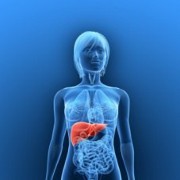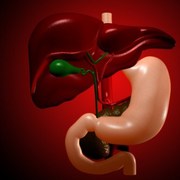 Photo: Getty Images
Photo: Getty Images
In part I, we examined the role of a healthy liver in blood clotting, processing food, detoxifying our bodies, and processing medications. We learned that all these processes, as well as the healthy action of other bodily systems and organs can be affected when the liver no longer functions as it should as a result of overuse and abuse causing scar tissue to replace healthy liver tissue. This condition is cirrhosis, which is the twelfth leading cause of death (27,000 per year), and affects more men than women.
Causes and Risk Factors for Cirrhosis
Most commonly in North America, heavy consumption of alcohol and chronic hepatitis C are responsible for cirrhosis of the liver. “Cirrhosis is not caused by trauma to the liver or other acute, or short-term, causes of damage. Usually years of chronic injury are required to cause cirrhosis.” (National Digestive Diseases Information Clearinghouse – NDDIC)
The amount of alcohol needed to result in alcohol-related liver disease varies from person to person. “For women, consuming two to three drinks—including beer and wine—per day and for men, three to four drinks per day, can lead to liver damage and cirrhosis. In the past, alcohol-related cirrhosis led to more deaths than cirrhosis due to any other cause.” (NDDIC)
Other causes include:
• Chronic hepatitis B and D
• Nonalcoholic fatty liver disease (NAFLD) where fat builds up in the liver; it is normally associated with obesity, diabetes, protein malnutrition, coronary artery disease and corticosteroid medications (NDDIC)
• Autoimmune hepatitis – where the body’s immune system attacks liver tissue; about 70 percent of cases are in females
• Diseases that damage or destroy bile ducts
• Cystic fibrosis, alpha-1 antitrypsin deficiency, hemochromatosis, Wilson disease, galactosemia and glycogen storage diseases (all are inherited diseases)
• Drug reactions, prolonged exposure to toxic chemicals, parasitic infections and recurrent bouts of heart failure with liver congestion (NDDIC).
Diagnosis of Cirrhosis
Consideration and diagnosis of cirrhosis is based on presenting symptoms and causal factors. If it is suspected that a person has cirrhosis, then a physical examination is performed, along with blood tests and CT scans or laparoscopy (abdominal scope). A biopsy may also be used to help confirm the diagnosis and determine if there is alternate or additional damage to the liver.
The next stage is to determine how severe the case is. Three blood tests are done to help doctors determine the “model for end-stage liver disease” or MELD score, “which was developed to predict the 90-day survival of people with advanced cirrhosis.” (NDDIC) These three blood tests check for blood clotting, bile pigment in the bloodstream and kidney function.
Treatments for and Prevention of Cirrhosis
As in most medical situations, the precise recommended treatment plan for cirrhosis of the liver depends on the cause of the disease and what kind of complications are present. With cirrhosis, the focus is on slowing the progression of the scar tissue and preventing or treating the complications. In some cases, hospitalization may be required.
Interestingly, the treatments for cirrhosis are also pointers for preventing the onset:
Eat a Nutritious Diet: Malnutrition is common in people with cirrhosis so a well-balanced diet that is low in sodium is often recommended.
Avoid Alcohol and other Drugs: It is rather obvious that overuse of alcohol, and use of illegal drugs should be avoided. It is important for those with cirrhosis to consult with their family doctor before taking any vitamins or prescription or over-the-counter medications.
Other treatments include diuretics, antibiotics, beta-blockers or nitrates, endoscopy, cleansing of the bowel through laxatives or enema, reducing intake of dietary proteins, hemodialysis and medications to help improve blood flow through the kidneys.
When complications cannot be controlled, then liver transplant becomes an option.
Sources:
Liver. Gastroenterological Society of Australia. Web. Sept 22, 2011. http://gesa.org.au/digestive-system/liver.cfm
Cirrhosis. National Digestive Diseases Information Clearinghouse by the U.S. Department of Health and Human Services. Web. Sept 22, 2011. http://digestive.niddk.nih.gov/ddiseases/pubs/cirrhosis
Cirrhosis. MedlinePlus a service of the U.S. National Library of Medicine National Institutes of Health. Web. Sept 22, 2011. http://www.nlm.nih.gov/medlineplus/cirrhosis.html
Reviewed September 22, 2011
by Michele Blacksberg RN
Edited by Jody Smith






Add a CommentComments
There are no comments yet. Be the first one and get the conversation started!